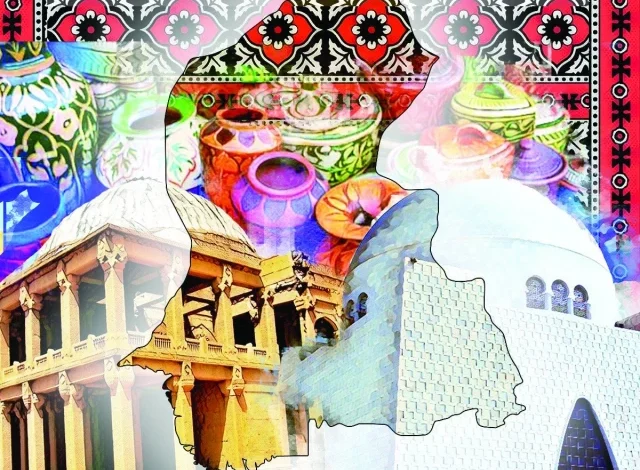Stakeholders seek tourism overhaul

KARACHI:
Sindh’s tourism stakeholders have urged the provincial government to place tourism development at the centre of its policy agenda, emphasising that the province’s extraordinary cultural, historical and natural diversity remains vastly underutilised due to weak infrastructure, limited marketing and insufficient institutional focus.
The call was made at an award ceremony recognising Sindh-focused vloggers, travel writers, tour operators and travel agents, titled “Sindh Rohani, Saqafti, Tafrihi Siahat ka Faroogh” (Promoting Spiritual, Cultural and Recreational Tourism in Sindh), jointly organised by Attraf, the Sindh Culture, Tourism and Antiquities Department, and the Travel Agents Association of Pakistan (TAAP). Participants from the travel industry, private sector, academia and government stressed the need for coordinated efforts to make Sindh a year-round tourism destination, noting that the province offers some of the world’s most iconic archaeological treasures, a 350-kilometre coastline, diverse ecosystems and vibrant cultural festivals, yet captures only a small share of Pakistan’s domestic and international tourist flows.
“Only 10% of Sindh has been explored, rest is awaiting in ruins,” said Muhammad Rafiq Khan, the founding Chairman of Bukhari Group.
Sindh is home to three UNESCO World Heritage Sites and a rich tapestry of ancient civilisations but remains overshadowed by northern regions in the national tourism narrative.
TAAP former Chairman, Nadeem Sharif, described Sindh as a ‘majmua’ (collection) that caters to varied interests and proposed collaboration between the education and tourism departments to encourage student visits to heritage sites by awarding academic credits or additional marks.
Seasoned journalist Mehmood Sham called for a proactive storytelling strategy, suggesting the publication of books, creation of digital travel documentaries and partnerships with digital content creators to showcase lesser-known destinations. He added that Sindh’s mild winters present an opportunity to promote school excursions at a time when northern areas remain inaccessible due to snowfall.
Travel vlogger Farooq Azam pointed out persistent challenges that deter tourism, including perceptions about law and order, poor road infrastructure and a lack of organised facilities. He said that when groups travel to interior Sindh or Balochistan, “we often asked about safety, roads condition and other services,” reflecting lingering concerns despite improvements in security. Author Ghazala Khalid noted that despite a population exceeding 60 million, less than 10% of Sindh’s tourism potential has been explored, and that Karachi’s urban residents, who seek short and affordable getaways, remain unaware of many destinations.
Speakers unanimously called for a comprehensive policy overhaul involving public-private partnerships, upgraded road networks, a dedicated tourism police force and an extensive digital marketing strategy. They also urged integration of tourism-related learning in school curricula to nurture a new generation of culturally aware travellers.
Provincial Minister for Culture, Tourism, Antiquities and Archives Syed Zulfiqar Ali Shah assured full government support for private-sector tourism initiatives and highlighted ongoing projects such as the expansion of Gorakh Hill Station, the success of the Thar Safari Train and the operationalisation of Thar Airport to boost desert tourism.
He revealed plans to develop resorts at Keenjhar Lake and modernise Mohenjo-daro to match international heritage standards. Shah also stressed the importance of constructing a direct road link from Nooriabad to Gorakh Hill and sought federal assistance to upgrade the Hyderabad-Sukkur motorway. Sindh Minister for Local Government Syed Nasir Hussain Shah reaffirmed the government’s commitment to supporting private-sector tourism development, saying that every constructive step taken by stakeholders would be backed by the administration.
Speakers at the event described Sindh as a “complete package” for travellers, citing its vast archaeological riches such as Mohenjo-daro, Makli Necropolis, Ranikot Fort, Bhambore and the Sufi shrines of Sehwan Sharif, Bhit Shah and Udero Lal. They highlighted the province’s natural and adventure tourism options, including Gorakh Hill Station, Kirthar National Park, the lakes of Haleji, Keenjhar and Manchar, the Thar Desert and the riverine landscapes of the Indus.
Sindh’s coastline offers additional potential with popular beaches such as Hawkes Bay, Sandspit, Paradise Point and French Beach, as well as the ecologically significant Indus Delta mangroves. Cultural, religious and rural tourism, including the historic Chaukhandi tombs, the Sadhu Bela temple, Jain temples of Nagarparkar, handicrafts like ajrak and rilli, and the desert villages of Tharparkar, further enrich the province’s tourism offerings.
The stakeholders pledged to reposition Sindh as a dynamic, safe and globally competitive tourism destination capable of creating jobs, supporting local economies and celebrating the province’s millennia-old cultural identity.



